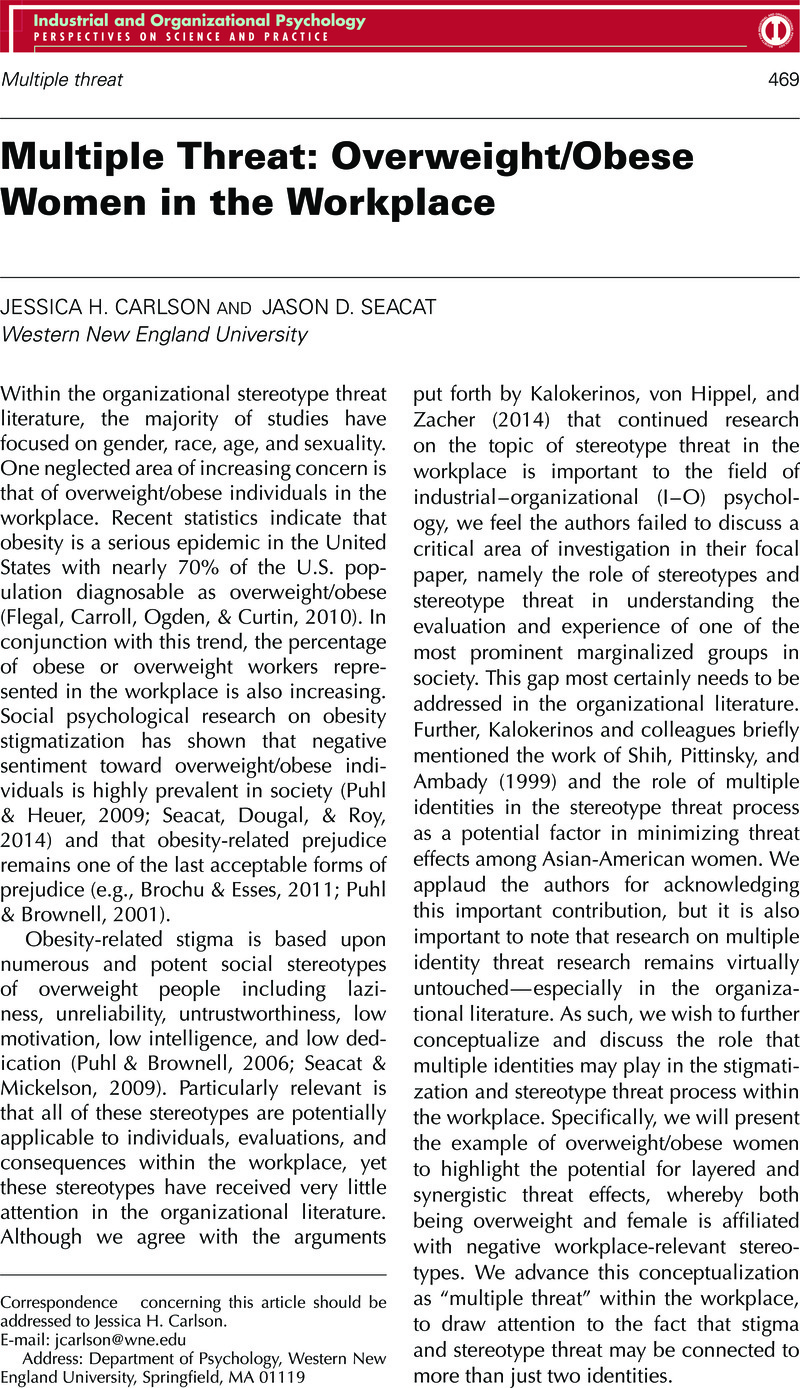Crossref Citations
This article has been cited by the following publications. This list is generated based on data provided by Crossref.
Casad, Bettina J.
and
Bryant, William J.
2016.
Addressing Stereotype Threat is Critical to Diversity and Inclusion in Organizational Psychology.
Frontiers in Psychology,
Vol. 7,
Issue. ,
Watson, Lisa
Levit, Tatiana
and
Lavack, Anne
2018.
Stigmas, Work and Organizations.
p.
11.
Rex‐Lear, Madeline
Jensen‐Campbell, Lauri A.
and
Lee, Sarah
2019.
Young and biased: Children's perceptions of overweight peers.
Journal of Applied Biobehavioral Research,
Vol. 24,
Issue. 3,



